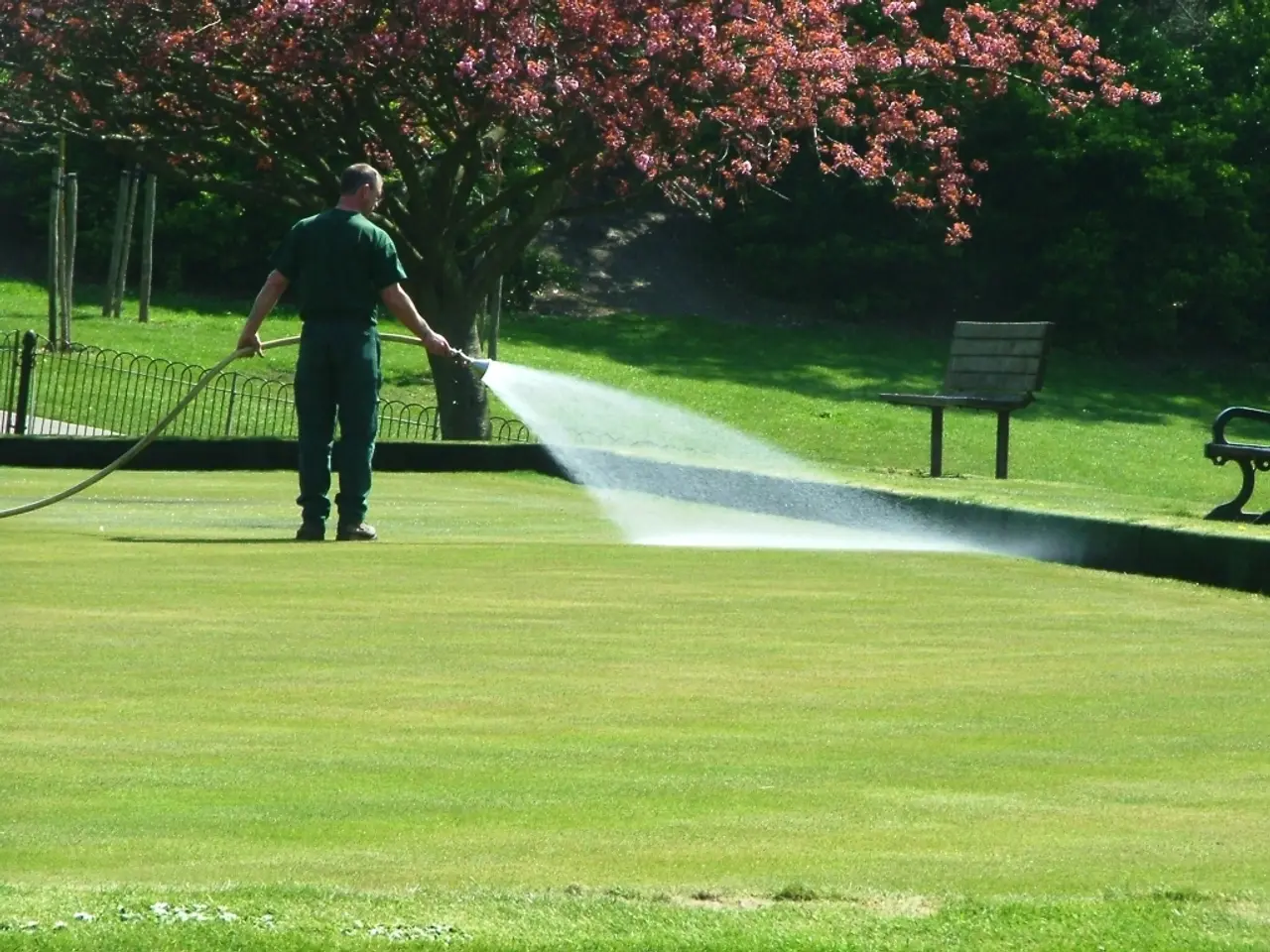Frequency of watering for drought-resistant plants in the garden, as advised by professionals
In a bid to create a thriving Mediterranean garden at the National Trust's Beningbrough in North Yorkshire, a collection of plants from Mediterranean zones has been introduced. These plants are designed to withstand both extreme heat and wet conditions, making them ideal for our unpredictable British weather.
When it comes to watering these drought-tolerant plants, understanding their specific needs is crucial for their health and growth. Here's a guide to watering drought-tolerant plants effectively:
**Establishment Phase (First Year)**
During the establishment phase, drought-tolerant plants in borders need watering every one to two weeks, depending on the weather conditions. This encourages deep root development and helps them adapt to their environment. In pots, these plants may require slightly more frequent watering, about once a week, as potting soil can dry out faster than ground soil.
**Established Plants**
Once established, drought-tolerant plants can have their watering significantly reduced. They often only need water when there is a prolonged drought or during extremely hot weather, which could be every few weeks or only when the soil feels dry several inches deep. For established plants in pots, watering can be less frequent, usually every 7 to 10 days.
**Special Considerations**
Plants in well-draining soil may require less frequent watering compared to those in poor-draining soil. In areas with frequent rainfall, supplemental watering may not be necessary. However, in arid regions, plants may still require occasional watering even if they are drought-tolerant.
**Watering Practices**
Watering drought-tolerant plants efficiently is crucial to prevent moisture loss in the summer heat. Watering early in the morning or evening is recommended to avoid water evaporation during the heat of the day. Regular watering helps maintain the health and performance of drought-tolerant plants in pots.
Mulching with gravel helps reduce water loss for plants in a Mediterranean-style garden. Mulching the rest of the garden with compost and leaf mould also helps keep moisture in. Feeding drought-tolerant plants in pots with a seaweed feed can help replace nutrients leached out by water.
**Potting and Planting**
When planting in pots, it's important to include soil in the mix to help retain water. Planting drought-tolerant plants in autumn and spring encourages them to put roots down into the soil to find water. Watch out for windy weather as it can be very drying for potted drought-tolerant plants.
**Symptoms of Stress**
Prolonged dry spells in hot weather can cause stress symptoms such as yellowing or reddening foliage and a noticeable drop in flowering for drought-tolerant plants in pots. After the first year, drought-tolerant plants typically develop strong enough root systems to handle dry spells without assistance.
The newly planted drought-tolerant plants in a Mediterranean garden are only watered for the first year. Containers, especially terracotta pots and hanging baskets, can dry out more quickly than other containers, so drought-tolerant plants in these will need watering once or twice a week. A watering can, drip irrigation kit, or smart watering system can be used to water drought-tolerant plants.
By following these guidelines, you can ensure that your drought-tolerant plants thrive in your garden, regardless of the weather conditions. Happy gardening!
In the process of cultivating a Mediterranean garden at Beningbrough, a combination of home-and-garden elements, including gardening techniques, are employed to create an optimized environment for drought-tolerant plants. Adjusting the watering schedule based on the plant's stage of growth and soil conditions is vital in maintaining a balanced lifestyle for these plants, as demonstrated in the provided guide.




